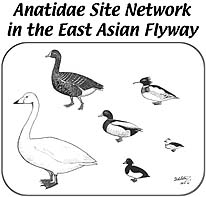
Plan of Conservation and Wise Use of Miyajimanuma
Nobutaka Hayashi, Bibai City Government, Planning and Finance Division
from Anet Newsletter No.3, page 5 (November 2002)
[ in Japanese ] [ Back ]
[ What's New ] |
[ Site Network ] |
[ Action Plan ] |
[ Links ] |
[ Atlas ] |
[ Sitemap ] |
[ Japanese pages ] |
[ Network Sites ] |
[ Activities ] |
[ Introduction ] |
[ Contacts ] |
|
|
Plan of Conservation and Wise Use of MiyajimanumaNobutaka Hayashi, Bibai City Government, Planning and Finance Division from Anet Newsletter No.3, page 5 (November 2002) [ in Japanese ] [ Back ] |
|
Lake Miyajimanuma is a permanent freshwater lake of 41ha in the middle basin of a river Ishikari-gawa, central Hokkaido, Japan (43°20'N, 141°43'E). Every spring and autumn, up to 50,000 White-fronted Geese Anser albifrons stay the lake during their migration, and it is 33-50% of its East Asian population, largest in the country. A number of swans and ducks also stay the lake, including 8,600 Bewick's Swan Cygnus bewickii (c 20%) and 7.190 Pintail Anas acuta (c. 1% of East Asian population, respectively). The lake supports c. 70,000 Anatidae individuals. The lake is surrounded chiefly by rice fields and the goose flocks use the fields for their food during their stay in the lake. Main food of them are rice grains and leaves of weed plants on the stubble fields but they also takes young shoot of wheat fields in limited period in spring. It has caused conflict with farmers for many years. The local authority, Bibai City has made efforts to harmonise the local people and the conservation of waterbirds and the wetland of international importance. Some non-governmental organisations and scientists has assisted in the efforts. It is after joining to the Anatidae Site Network in 1999 that the City organised a forum where the relevant people have an opportunity to discuss on the harmonisation of people and nature in the city in March 2000. Other Network Site also joined and reported its own efforts and experiences to the forum. Some study tours jointly by local farmers, scientists and city officials were organised to learn experiences in other wetlands in the country and in foreign countries such as the Netherlands and Britain. In the fiscal year of 2001, a series of workshops were organised with local people including not only farmers but also tourism groups and educators in the city. They had 5 times of discussions and built a concept towards conservation and wise use of the lake, with assistance from a non-government organisation, research institutions, and a consultant. The City incorporated the concept and proposals from the workshops into the Bibai City Plan of Conservation and Wise Use of Miyajimanuma, established in March 2002. |
|||||||||||||
|
The Plan is for the next 10 years of FY2002-2011 with monitoring its achievement and revising within the period. It analysed historical and current situations and identified objectives in the four fields of nature, agriculture, tourism and awareness. The 12 objectives identified were incorporated into 11 operational objectives and 18 actions. In early October 2002, the Miyajimanuma National Wildlife Protection Area was designated. The nomination to Ramsar List was declared in the national official gazette in middle October. The City organised the second Miyajimanuma Forum in late October to report the nomination to the local communities, as well as to provide an opportunity to learn experiences from other Ramsar Sites and Network Sites. The forum built Miyajimanuma Declaration for their future efforts with the Plan. |
|
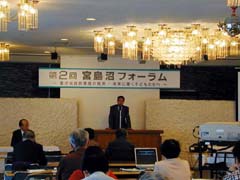
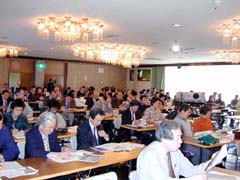
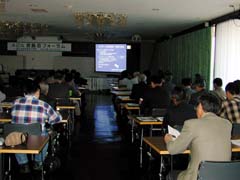
The Second Miyajimanuma Forum ©2002 Bibai City
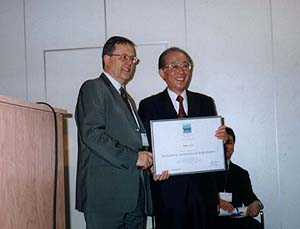 [Editorial Note]
[Editorial Note]
In the 8th CoP of Convention on Wetlands (Ramsar, 1971), the Mayor of the Bibai City was presented the Diploma of listing to the Ramsar, from Secretary General of the Convention, November 2002 (Refer to What's New @ Ramsar).
[ Top ] [ in Japanese ] [ Back ]
[ Network Sites ] |
[ Activities ] |
[ Introduction ] |
[ Contacts ] |
[ What's New ] |
[ Site Network ] |
[ Action Plan ] |
[ Links ] |
[ Atlas ] |
[ Sitemap ] |
[ Japanese pages ] |